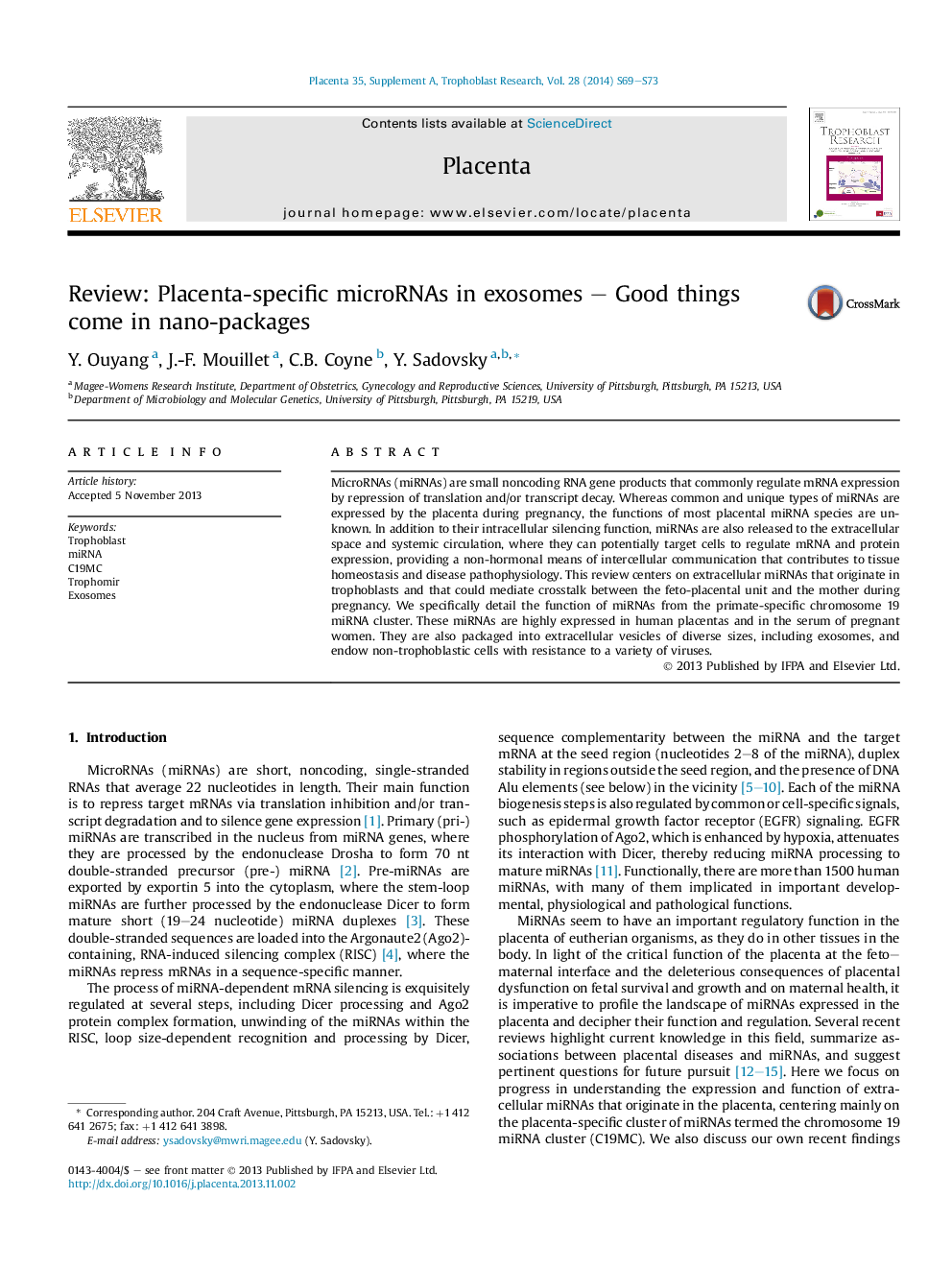| Article ID | Journal | Published Year | Pages | File Type |
|---|---|---|---|---|
| 2789167 | Placenta | 2014 | 5 Pages |
MicroRNAs (miRNAs) are small noncoding RNA gene products that commonly regulate mRNA expression by repression of translation and/or transcript decay. Whereas common and unique types of miRNAs are expressed by the placenta during pregnancy, the functions of most placental miRNA species are unknown. In addition to their intracellular silencing function, miRNAs are also released to the extracellular space and systemic circulation, where they can potentially target cells to regulate mRNA and protein expression, providing a non-hormonal means of intercellular communication that contributes to tissue homeostasis and disease pathophysiology. This review centers on extracellular miRNAs that originate in trophoblasts and that could mediate crosstalk between the feto-placental unit and the mother during pregnancy. We specifically detail the function of miRNAs from the primate-specific chromosome 19 miRNA cluster. These miRNAs are highly expressed in human placentas and in the serum of pregnant women. They are also packaged into extracellular vesicles of diverse sizes, including exosomes, and endow non-trophoblastic cells with resistance to a variety of viruses.
